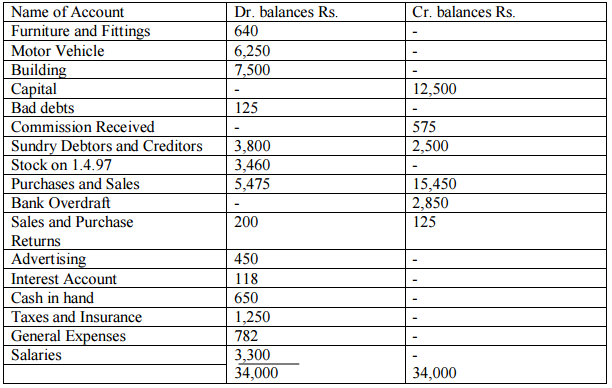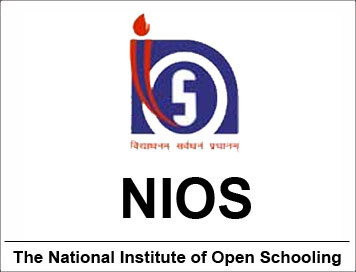(Download) NIOS Question Paper Of Accountancy Senior Secondary
Disclaimer: This website is NOT associated with CBSE, for official website of CBSE visit - www.cbse.gov.in
(Download) NIOS Question Paper Of Accountancy Senior Secondary
Time: Three Hours
Maximum Marks: 100
Note: The question paper is divided into two sections A and B. Attempt all questions of Section A and any one question of Section B:
Section A
Note: All questions are compulsory
1. Give an example each of capital expenditure and revenue expenditure. 1
2. What is the legal provision of Profit sharing ratio if nothing is given in ‘Partnership Deed”? 1
3. A student of Accountancy feels that a Simple Cash Book always shows a credit balance. Give your opinion. 2
4. Define anyone of the following:
i) Vouchers
ii) Supporting Vouchers
iii) Accounting Vouchers 2
5. What is Bank Reconciliation Statement? 2
6. Give the names of any four assets in liquidity order. 2
7. Give the formulae of ‘Sacrificing ratio’ and ‘Gaining Ratio’. 2
8. Explain in brief the term ‘Accounting’ and give any two differences between bookkeeping and Accounting. 3
9. What is ‘going-concern Assumption’? Explain briefly its significance. 3
10. The Capital of is a business concern is Rs. 1,00,000. The value of assets
is Rs. 2,00,000. Complete the accounting equation with four suitable liabilities
assuming
imaginary figures. 4
11. Suppose the bank account in your ledger shows a credit balance. What will
be the effect of following transactions in your pass book balance.
(i) One of your customers deposit some amount directly into your bank account.
(ii) Bank Charged interest on the amount overdrawn by you.
(iii)A cheque deposited last week by you has been dishonoured. Bank charged some
amount on account of it.
(iv)Under your standing instructions Bank paid your insurance premium to the
Insurance Company. 4
12. A, B and C are equal partners. B retires on March 1, 1997 and his share is taken over by A and C in the ratio of 3:5. Profits upto Dec.97 is Rs. 18,000. Total Goodwill of the firm is Rs. 24,000. How much will B get from A and C for goodwill and how much will he get for profit for 1997? Pass necessary journal entries. 5
13. What is meant by the term ‘Forfeiture of Shares’? Can forfeited shares be reissued at discount? If so, to what extent? Where would you transfer the balance left in the shares forfeited account of the reissue of such shares? 5
14. A Ltd. Co. having a nominal capital of Rs. 20,00,000 divided into 2,00,000 equity shares of Rs. 10 each, offered to the public for subscription 1,00,000 equity shares at a premium of Rs. 2 per share payable as:
On application Rs.2 per share
On allotment Rs.5
per share (including premium)
On Ist Call
Rs. 2 per share
On final Call
Rs. 3 per share
All the shares offered were applied for and alloted. The allotment money was received in full. A shareholder holding 100 shares failed to pay the first call and his shares were forfeited. These shares were reissued at Rs. 6 per share, Rs. 7 per share paid up. Final call has not been made. 10
Give the necessary journal entries to record the above transactions.
15. The following Trial balance is extracted from the books as on 31st March 98.

Adjustments:
(a) Stock on hand on 31.3.98 was Rs. 3,250
(b) Depreciate Building at 5%, Furniture and fittings @ 10% and Motor Vehicle by
Rs. 1250.
(c) Rs. 85 is due for interest on Bank Overdraft.
(d) Salaries Rs. 300 and Taxes Rs. 120 are outstanding.
(e) Insurance is prepaid to the extent of Rs. 100.
(f) One fifth of the commission received is in respect of the work to be done
next year.
Prepare Trading and Profit and Loss Account for the year ended 31st March 98 and Balance Sheet as on that date. 12
16. A and B Sharing profits in the ratio of 5:3 admit C as a partner with
1/5th share in profits. He has to contribute Rs. 20,000 as his capital. The
Balance Sheet of A and B before admission was as follows:
